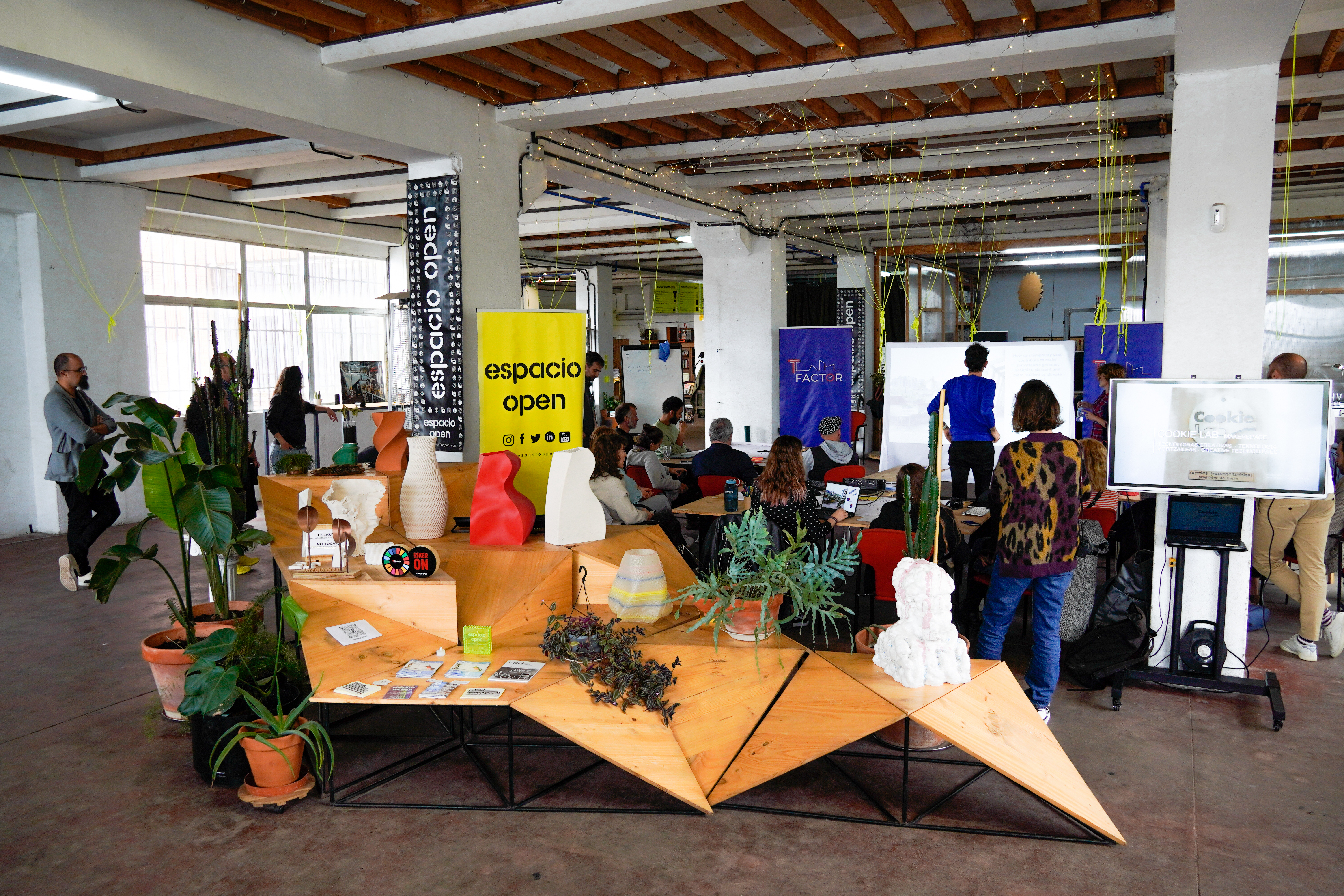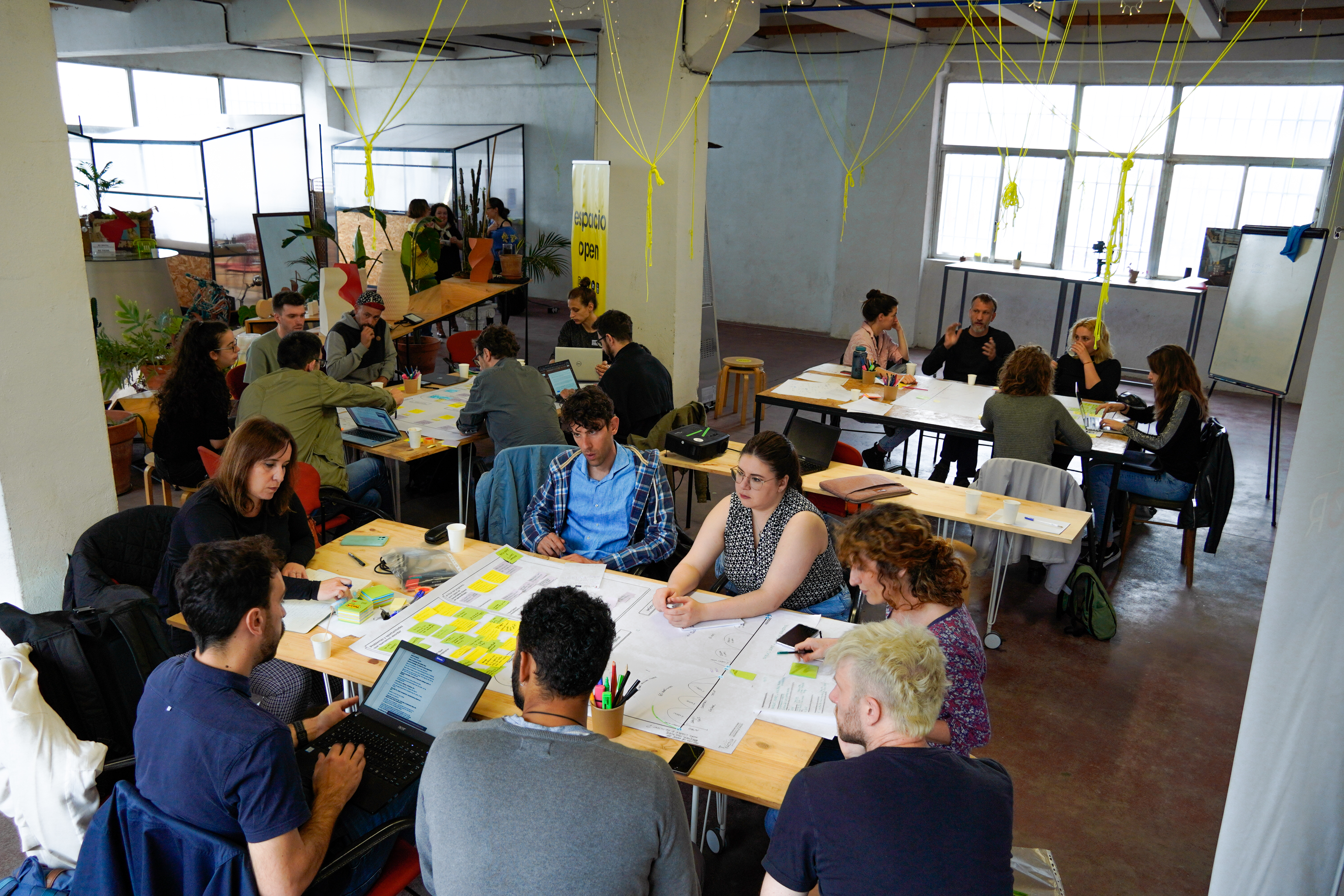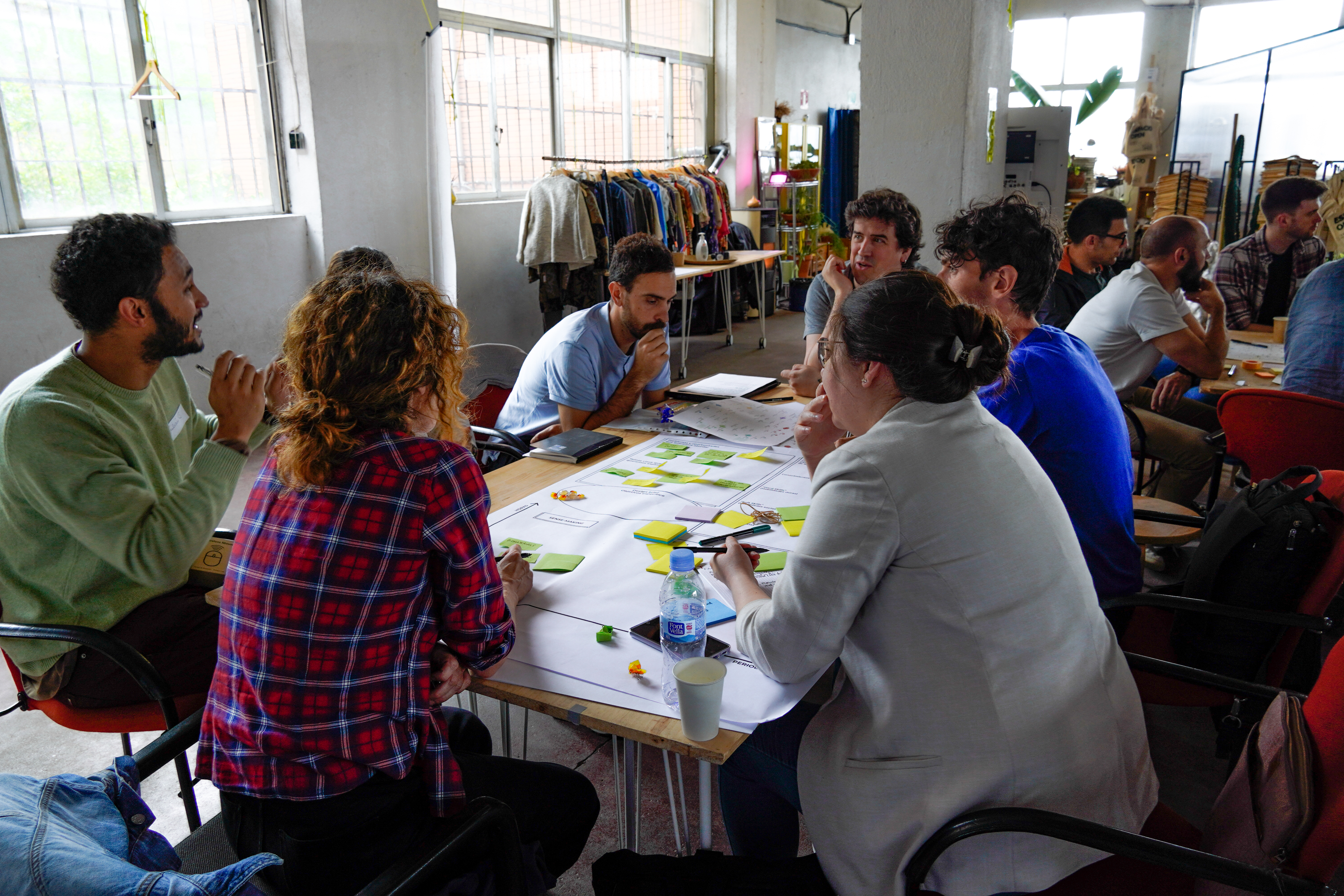Usually, we tend to think about temporary uses mainly as ways to unlock new urban uses and functions. But what if we start thinking beyond the sole spatial or functional dimension of temporary uses? What if we look at the meanwhile in urban regeneration as a trial for new processes of co-creative learning and capacity-building in address to sustainable urban development challenges?
On May 25-26, 2022, we ran an Innovation Jam in Bilbao involving local universities and cultural and creative initiatives, with the aim of co-designing novel learning methodologies and paths in higher education driven by urban challenges, public-private-people collaboration and co-creation.
Bilbao’s Zorrotzaurre is currently one of the largest redevelopments in the city, which aims to transform this former industrial site into a landmark of innovation,with a special eye on cultural and creative industries. Prestigious universities such as IED Kunsthal, DigiPen, Mondragon University have recently settled in the island and others will soon come, joining an already existing ecosystem of cultural and creative grassroots organisations that in the past 10 years have contributed to keeping the site alive and vibrant. This will provide the opportunity to further boost the transformation of the whole of Bilbao from an industrial to a knowledge-based and cultural urban hub.
Yet, the redevelopment of Zorrotzaurre holds massive challenges. Not only is there a question mark around whether the regeneration will be able to replicate and trigger the well-known Bilbao’s effect; a key question is also around the future of the organisations and communities that are already active on site, and how we can mitigate the risk of disrupting and displacing their relational capital and social and economic value. In this context, a key mission for T-Factor in Bilbao is to explore how temporary uses can drive novel forms of multi-stakeholder collaboration, particularly through ‘co-creation alliances’ between Universities and grassroots initiatives
that can contribute to build a diverse, pluralistic and creative urban software.
The Innovation Jam: a key step towards Bilbao’s mission of Universities-grassroots collaboration
The Innovation Jam represented a key milestone for unlocking universities-grassroots collaboration - following the Guiding Star Workshop held in October 2021. The purpose was to convey these actors in a collaborative co-design effort which shall lead to three innovative learning modules jointly developed by Universities and grassroots, responding to three thematic challenges respectively - sociality & wellbeing, circularity and climate resilience.
As typically in project-based learning, these challenges represent the broad landscape in which students will explore real-world situations and problems, and develop a portfolio of temporary interventions that can provide meaningful inputs to the broader redevelopment. Across the trainings, the whole context of Zorrotzaurre will become a platform of distributed learning and co-creation, allowing students to experiment with different spaces, uses and audiences with the support of professors, grassroot initiatives, as well as of experts from the T-Factor Transformation Labs. The trainings are meant to slot into already existing University curricula, so as to create better conditions for replication and legacy.
Innovation Jam: the steps
The Jam was structured into a two half-days workshop, hosted by the local team of T-Factor (Bilbao Ekintza, Espacio Open and Tecnalia) and facilitated by experts from three T-Labs - i.e., Climate Change and Regenerative Cities, Urban Design for Sociality and Wellbeing, Circular and Collaborative Economy. Jammers included representatives from the three main universities involved in the mission (IED Kunsthal, Mondragon University and University of Deusto), as well as members of local grassroots initiatives (Bobo Espazioa, Godot Studio, Herrizikleta, Piugaz, Zirkozaurre, ECCB, Fablab Network).
In a first step, the three T-Labs showcased examples of temporary uses and initiatives across different cities in the world, relevant to the three main thematic challenges:
‘How can temporary uses contribute to testing new forms of social inclusion in Zorrotzaurre?’
‘How can temporary uses contribute to making Zorrotzaurre a demonstrator of circular practices at neighbourhood level?’
‘How can temporary uses contribute to making Zorrotzaurre greener, healthier, pleasant and more resilient to climate change?’
After these presentations, we started the work in groups, each group addressing one challenge and through a University-grassroots matchmaking loosely defined before the Jam. The brainstorming inquired into the main problems and opportunities to be addressed through the learning paths, and then tapped into the specific themes, learning objectives and the design briefs - the latter defined as a working prompt to be launched to students at the beginning of the trainings.
Step 2 / Mapping learning outcomes
We then moved to the right side of the canvas, mapping out the key learning outcomes associated with each learning path, in turn organised into knowledge (what students will know), skills (what students will be able to do) and attitudes (how students will think and behave). We put special emphasis on grassroots initiatives, particularly in terms of how their expertise and knowledge of the local context may meaningfully accompany students throughout the exploration, design and prototyping of temporary uses that address concrete needs and opportunities in Zorrotzaurre.
Step 3 / Organising the trainings
In the last step, we explored the concrete phasing of the learning paths, starting from three macro-phases - sense-making, design, prototyping - that work as a reference for scaffolding the previously mapped learning outcomes, and for organising the learning methodologies in detail.
Next Steps
As a result of the Jam, we came up with a general structure for each training and the identification of its key requirements, including in terms of hours, timing, University Credits (ECTS), intermediary and final outputs to be delivered by students, main moments where both the grassroots and T-Labs may intervene in the process. This work will continue in the upcoming period, in order to dig deeper into all the aspects that could not be covered during the Jam and to be ready to concretely start the training paths in September 2022, coherently with the start of the new academic year.
Want to explore the Meanwhile Learning Innovation Jam tool?
Authors: Laura Martelloni, ANCI Toscana
- Universities-Grassroots collaboration
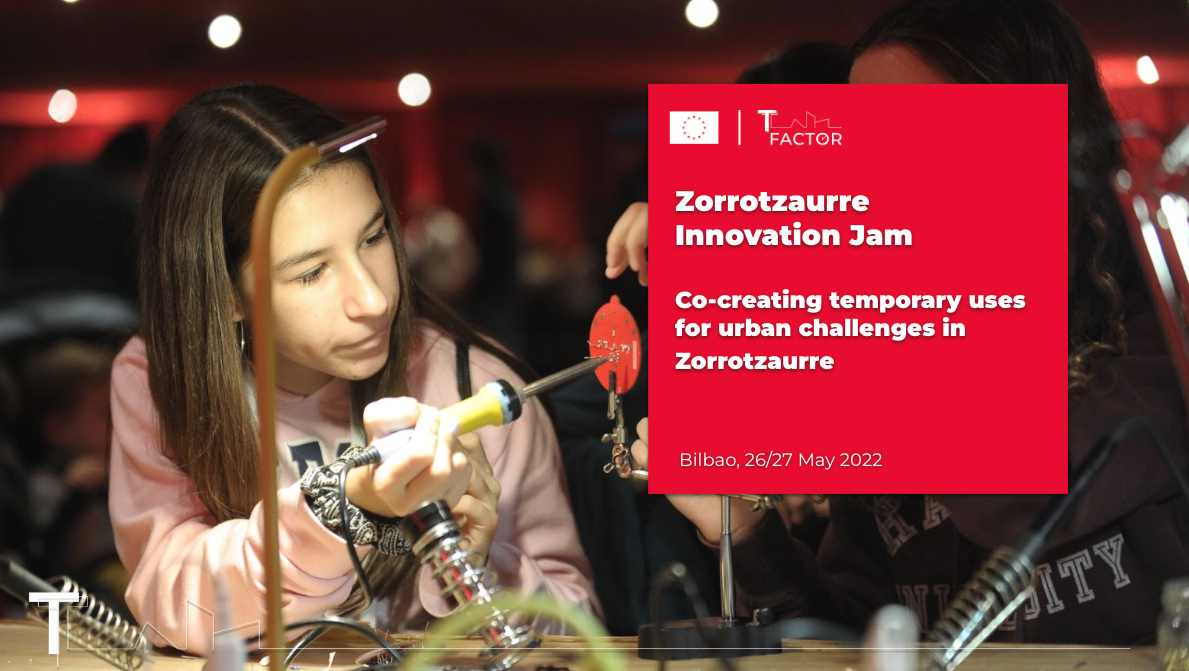
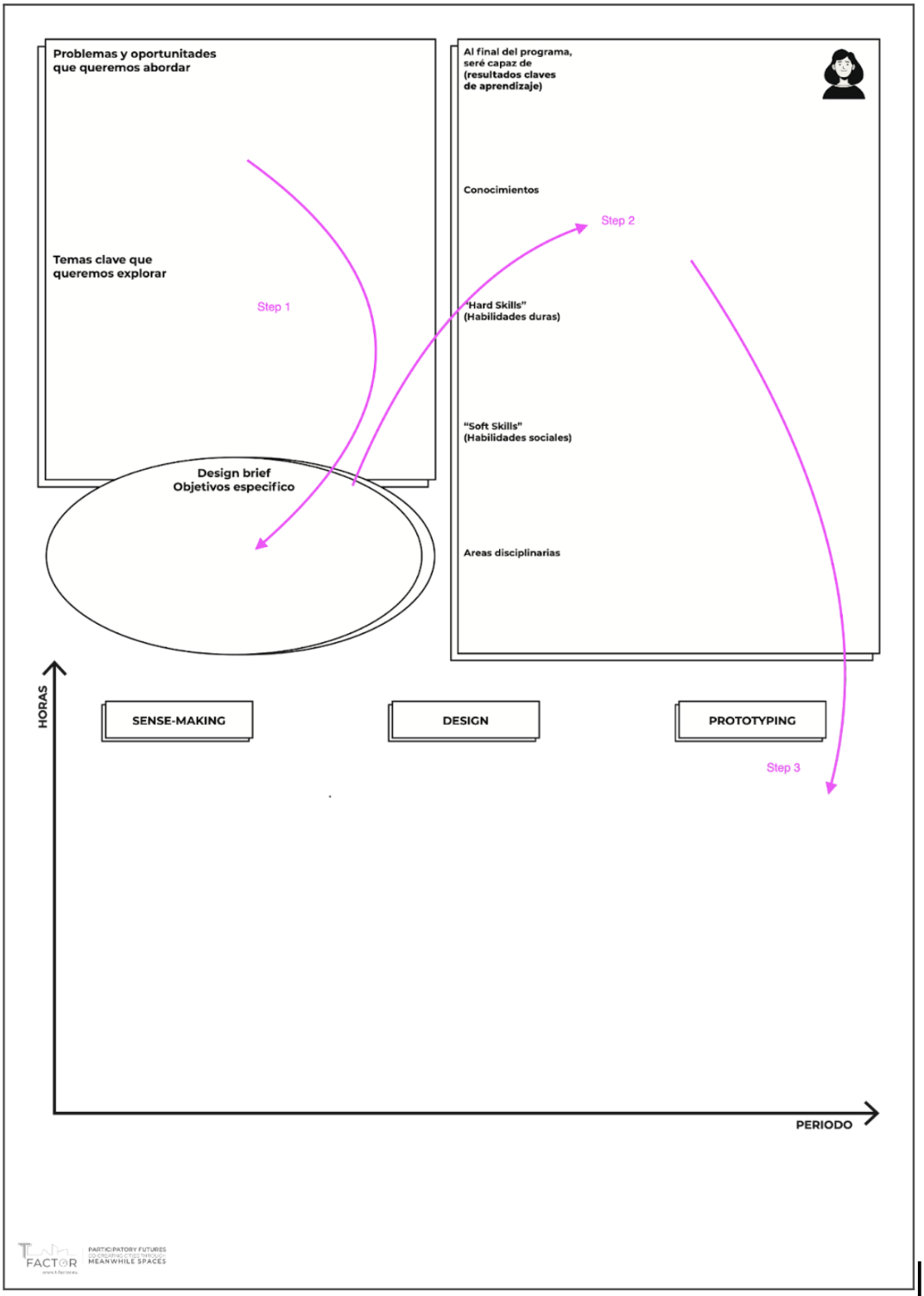
Meanwhile Learning Innovation Jam
Design a learning module that leverages the meanwhile in urban regeneration in address to sustainable urban development challenges


